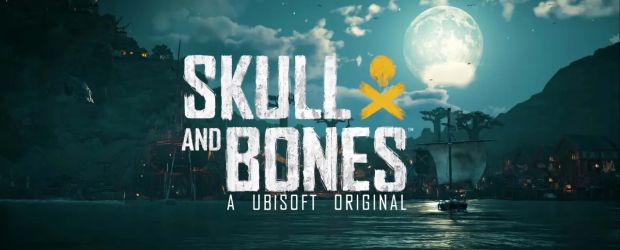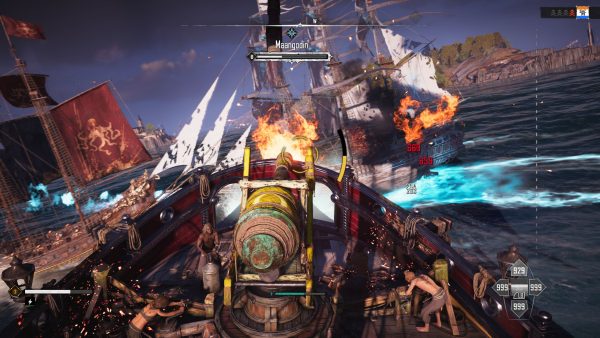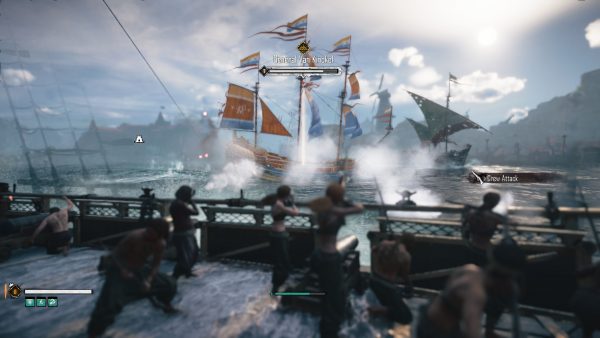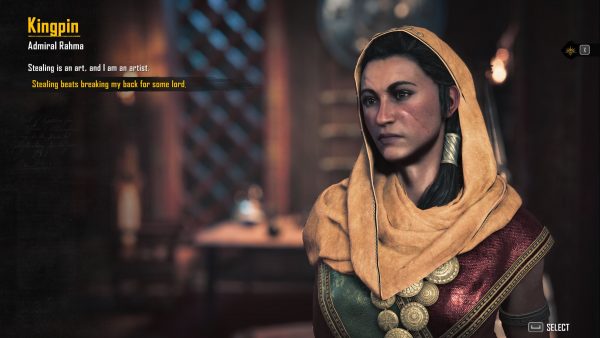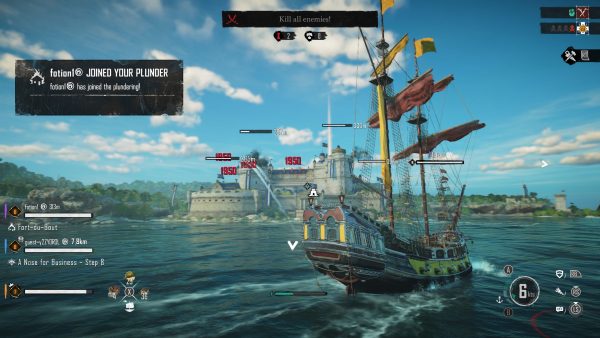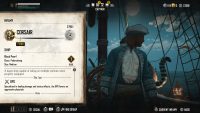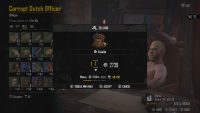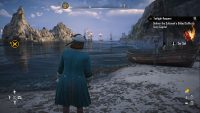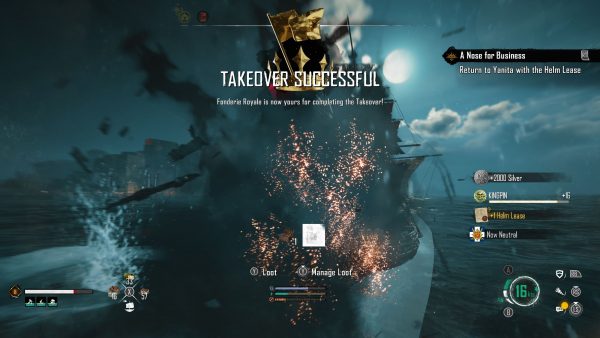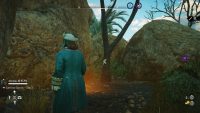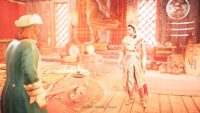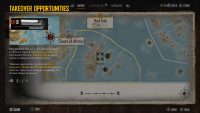Switch to: German
More than ten years after development began, Skull and Bones has been released. We’ve sunk countless hours into the pirate adventure for you.
When Assassin’s Creed IV: Black Flag was released in October 2013 for the penultimate generation of consoles, the ship battles in particular were celebrated. Ubisoft planned an expansion for the action adventure to expand the ship combat. After several iterations and reversals of the game concept, Skull and Bones was released as a full-price game with in-game purchases on February 13th, 2024 for PC (Epic Games Store, Ubisoft Connect), PlayStation 5 and Xbox Series X|S as well as via Ubisoft+.
First off you create your very own pirate in a rudimentary character editor and experience your first spectacular sea battle. Then the disillusionment begins – you find yourself on a small cutter, making you vulnerable to shark attacks and you have to defend yourself with javelins. You can freely explore the world of Skull and Bones from the start, at least in theory – from the starting area of the Red Island in the middle of the map to the East Indies and to the coast of Africa in the west. However, you will be traveling with your dhow for some time and huge waves await you on the high seas, which will sink your boat faster than you can scream for sea rescue. So we take on missions and collect resources to craft better ships and brave the rough seas.
The center piece of Skull and Bones are the ship battles. We fight the game’s six factions with cannons, mortars, flamethrowers, rockets and torpedoes by attacking their weak points highlighted in red. Unlike in Assassin’s Creed IV: Black Flag, we can shoot from almost any angle and the orientation of the ship is less important. We can increase the range of our cannons either through better iterations or special ship structures and thus improve the flame or flood effects. The ships have a certain inertia and we can adjust our sail in up to four levels. At the highest level we use up stamina, which we can replenish with coconuts or bananas. Cooked or grilled dishes increase stamina regeneration and have minor status-altering effects. We use repair kits to patch the holes in our boat in no time at all, but the cooldown time for most items is so long that we can hardly compete against higher-level enemies and all we can do is escape. However, the enemies stubbornly stick with you and our level of suspicion, which increases for a short time by sinking other ships for the respective faction, is artificially created in some missions, which turns some areas into pure death traps and without the help of other players or random events, in which the AI ships fight each other, are difficult to solve. The fights are fun, but you quickly get tired of the low-resolution explosions and boarding other ships is only visualized by a cutscene. Plundering is equally non-immersive since we destroy waves of ships and a few watchtowers before picking up a treasure chest at the end of each wave.
Another annoyance is the inventory management: In order to crack shipwrecks, we first have to be at exactly the right angle so as not to select all the planks and rusty nails that are floating in the sea. After a minigame we usually get silver and a bit of ammunition. If we then want to get the numerous planks and nails off board on land, we have to move each item individually to our storage. On the PC you have the advantage that you can work a little faster with the left mouse button, a key and the space bar, but with a controller you don’t have a lot of options. Absurdly, it is often not the weight of the cargo that is responsible for being over capacity, but rather the limited inventory slots. At least we can easily transfer our provisions from the old ship to the new one and access our storage at outposts. However, we cannot explain why we have to move weapons that we do not need from the warehouse into the ship’s inventory in order to be able to sell them to the blacksmith in the pirate den.
There are two pirate dens in Skull and Bones – Sainte-Anne on the Red Isle and Telok Penjarah in the East Indies. There – and only there, with the exception of the 33 outposts, which we will discuss later – can you go ashore and move around with your character. At sea you are basically the ship and exploring the barge is not possible. We can also fast travel between dens and outposts in exchange for silver. Since money is tight at the beginning, the ship is slow and supplies are scarce, you should be prepared for long trips. The shanties are a nice detail, but they wear out rather quickly. In the pirate dens we can order the construction of one of ten different ships from the shipwright, get new cannons or armor parts built by the blacksmith, receive improved saws, pickaxes and sickles from the carpenter, stock up on ammunition from the hawker and produce items in the refinery which we need to produce all of the items mentioned. We can set the armament of our ship, install hull protection, obtain certain bonuses with on-deck structures and change the appearance of our ship. There are numerous sets available for this, the individual parts of which we either buy or unlock as part of missions. The equipment on our ship determines our ship rank. There’s a ship rank recommended for each mission and the ranks of the opponents differ depending on the region – in our experience, they do not level up with your own progress. By completing missions, looting outposts or simply sinking ships, your fame level increases. This is how you work your way up from an Outcast to a Kingpin. Equipment and ships are tied to blueprints and your fame level. You can buy blueprints at the outposts and in the pirate dens. After you become a Kingpin, you can continue to increase this rank.
Skull and Bones has a free and a premium battle pass called Smuggler Pass, the exclusively cosmetic content of which should not expire and the premium version can be paid for with real money. Buyers of the Premium Edition automatically unlock the Premium version of the Battle Pass and receive €5 worth of premium currency. This contains customization items and consumables and your progress will be reset with each new season. Adding premium currency to a full-price game is a controversial decision, but you don’t have to use the in-game store.
You accept main contracts from the well-oiled pirate chief John Scurlock and the tough leader Yanita Nara in the starting area of Saint-Anne as well as her sister Houma Nara in Telok Penjarah in the East Indies. The missions in Skull and Bones are not very varied. We usually have to ship cargo from point A to point B or take out certain ships in a target area. The cutscenes are voiced very well, but the content of the monologues is relatively irrelevant and can at least be skipped. Dialogue decisions are without consequences. Little remains of the campaign that was once planned. Once we complete all of the Scurlock missions, we unlock the black market called The Helm, run by the Nara sisters. Alas, the same tiring quest design continues, but we can plan dangerous cargo trips in our hideouts and, after completing the last main contract, we can also conquer trade outposts and have them generate pieces of eight. This is the second currency besides silver that we need to unlock the really good equipment and the blueprint for the best ship, Sambuk. The conquests follow the plundering scheme, but with other players being able to attack us, which we have not experienced so far. While you spend around 50 hours of play to complete the main contracts with the grinding required to cut down trees or bushes individually in mini-games from the ship and process them in refineries, it takes significantly longer to unlock the best equipment currently available. Aside from the main missions, a wealth of side tasks await us, although these mostly consist of fetch quests and only a few exciting missions in which we take on giant sea monsters, mega crocodiles or enchanted ships in the style of the Flying Dutchman.
Player-versus-player and player-versus-environment events (PvP and PvE) also appear regularly on the servers. Here we can sink a legendary captain’s ship with other players, stop an armada of the Dutch Merchant Compagnie (DMC) or fight against each other for a legendary treasure. Only here and in the Helm trips can we damage other players’ ships – unlike in the beta, where we could be attacked anywhere. In the past few weeks, we can count on one hand the number of times other players have joined such a world event. Since matchmaking doesn’t always put you on a server with similarly leveled players, you can often find yourself hopelessly outnumbered in the legendary treasure hunt. If you die, you can be respawn directly at sea for a fee or at the last docked port. This doesn’t always work well: When we played the final mission, at times our progress was reset and at other times we were able to continue the battle. We were only able to complete individual missions after restarting the game because the corresponding interaction symbol simply wouldn’t appear. Other glitches from the beta regarding missing prompts for digging up treasure or over exposed cutscenes could apparently be fixed (see pictures 1 and 2 below). However, we did not detect any crashes or server problems. Speaking of interaction: The game supports cross-platform play and you can transfer your save game across all supported systems. Even in a group, we can only communicate with other players by using map markers and on-deck fireworks. The in-game text chat has not been available since the final beta started and a voice chat is not available.
Technically, Skull and Bones leaves us with mixed feelings: The ships look great, the animations of the characters on land are nice and the varied environment is also impressive. However, a closer look reveals many inconsistencies. When we dock at outposts, we see the same corridor networks, while the extremely low-resolution waves wash up on the beach behind us and departing ships disappear into nothingness. While the ship’s surface is a little prettier with Ray Tracing Global Illumination activated, the reflections in the water quickly disappear when you turn the camera, which on land feels like we’ve had a little too much rum. Screen space reflections are probably used here and the use of ray tracing, which is reserved for PC users, is used very sparingly. Even in the highest graphic details on the PC, bushes and palm trees constantly pop into the picture and rock formations only get their textures shortly before we hit them – without leaving a scratch. On consoles there is a quality and a performance mode to choose from. While the quality mode is presented in native 4K and capped at 30 frames per second, the performance mode operates at 720p, the same resolutions as in the decade-old Assassin’s Creed IV: Black Flag, and upscales that to 1440p using AMD’s FSR2. The frame rate limit in this mode is set to 60 frames per second. Both modes are very stable and we didn’t experience any frame rate drops, but especially in performance mode, which we used to create our beta video, Skull and Bones looks outdated. The music written by Tom Holkenborg fits the individual scenarios well, whether in a pirate den or in a fierce battle against an armada, but there’s not a single iconic theme. For a little more pirate flair, we felt tempted to turn on the soundtrack of Jack Sparrow’s adventures.
Conclusion
Skull and Bones offers entertaining ship battles, but surprisingly little content beyond that. The mission design is often unimaginative, the pirate atmosphere is poor due to a lack of interaction and immersion, and the multiplayer aspect falls flat because the world events are not very exciting and are hardly ever used. The game has its special moments, for example when we invade a narrow bay, attack a particularly strong captain with our mortars, are shot at from all sides and another player saves us at the last moment, or when we save someone in need with our healing mortar, in between, however, there are lots of fetch quests and grinding for supplies and better equipment. The decision to lock the best equipment behind an additional currency, which we have to unlock over time in classic service game style, tops the lack of identity off. If you plan to play the game with passible pirates, the game could be a little more entertaining, but in its current state, Skull and Bones is still far from being the pirate adventure that we urge you to experience.
Ubisoft supplied us with a PC and Xbox Series X|S copy of Skull and Bones. We captured the screenshots with PC.



